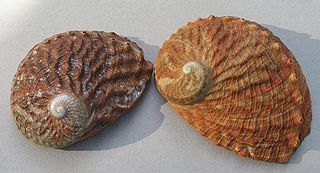{{ article.displayTitle }}
{{ 'ml-heading-abilities-covered' | message }}
{{ 'ml-heading-lesson-settings' | message }}
| | {{ 'ml-lesson-number-slides' | message : article.intro.bblockCount}} |
| | {{ 'ml-lesson-number-exercises' | message : article.intro.exerciseCount}} |
| | {{ 'ml-lesson-time-estimation' | message }} |
Catch-Up and Review
Here are a few recommended readings before getting started with this lesson.
Explore
Matching Box Plots
Example
Drawing a Dot Plot
Izabella's favorite candy, Frutty, is sold in packs of thirty candies with three different flavors — apple, orange, and banana.

Answer

Hint
Begin by finding the range of the data, then draw a number line which covers this range.
Solution
The smallest number in the data set is 8 and the largest is 12. This means that the dot plot can be displayed above a horizontal number line that covers at least the numbers from 8 to 12. Here, a number line from 7 to 13 will be used.

- The number 10 appears five times in the data set, so there should be five dots above number 10 on the number line.
- The number 8 appears once in the data set, so there should be one dot above number 8 on the number line.
- The number 9 appears twice in the data set, so there should be two dots above number 9 on the number line.
- The number 12 appears twice in the data set, so there should be two dots above number 12 on the number line.
From here, the dot plot can be drawn as follows.

Example
Extracting Information From a Dot Plot
A multiple-choice test has ten questions. After grading the test, the teacher produced the following dot plot to show how many correct answers each student had on the test.

How many students are there in the class?
Hint
Each dot represents the performance of one student on the test.
Solution
Each dot represents the performance of a student on the test. For example, since there is one dot above the number 4, it means that one student answered four questions correctly. The rest of the dot plot can be interpreted similarly.
| Number | Dots Above the Number | Conclusion |
|---|---|---|
| 0,1,2,3 | 0 | There are no students who answered fewer than four questions correctly. |
| 4 | 1 | One student answered four questions correctly. |
| 5 | 3 | Three students answered five questions correctly. |
| 6 | 2 | Two students answered six questions correctly. |
| 7 | 4 | Four students answered seven questions correctly. |
| 8 | 5 | Five students answered eight questions correctly. |
| 9 | 3 | Three students answered nine questions correctly. |
| 10 | 2 | Two students answered all ten questions correctly. |
Pop Quiz
Dot Plots and Goals Scored
A college hockey team played 23 games during a season. An enthusiastic fan made a dot plot of the number of goals the team scored in each game.

Example
Drawing a Histogram
![Ages=[57,61,57,57,58,57,61,54,68,51,49,64,50,48,65,52,56,46,54,49,51,47,55,55,54,42,51,56,55,51,54,51,60,62,43,55,56,61,52,69,64,46,54,47,70]. Points with the age of each president. When clicked, the president's name is displayed along with its presidential period](/mediawiki/images/a/a6/Mljsx_Slide_A1_U4_C1_Example3_0.svg)
Answer

Hint
Group the data in a frequency table using the intervals asked in the prompt. The first interval will be the ages 40–44.
Solution
The frequency table below shows the grouping of the data starting at 40 and using 5-year intervals.
| Interval | Frequency |
|---|---|
| 40–44 | 2 |
| 45–49 | 7 |
| 50–54 | 12 |
| 55–59 | 13 |
| 60–64 | 8 |
| 65–69 | 2 |
| 70–74 | 1 |
Use these intervals and frequencies to draw the histogram.

Example
Analyzing a Histogram
In 1936, Sir Ronald Aymler Fisher published a paper entitled The Use of Multiple Measurements in Taxonomic Problems.
Fisher investigated several measurements of three species of flowers.
The histogram below shows the summary of the data about the sepal length of the Iris virginica flowers.

How many Iris Virginica flowers did Fisher investigate in this paper?
Hint
Consider the height of the rectangles in the histogram.
Solution
In a histogram, the height of the rectangles shows the frequency of the data elements in the corresponding interval.
- There is one flower with a sepal length between 45 and 49 millimeters.
- There are no flowers with a sepal length between 50 and 54 millimeters.
- There are six flowers with a sepal length between 55 and 59 millimeters.
- There are seventeen flowers with a sepal length between 60 and 64 millimeters.
- There are fourteen flowers with a sepal length between 65 and 69 millimeters.
- There are six flowers with a sepal length between 70 and 74 millimeters.
- There are six flowers with a sepal length between 75 and 79 millimeters.
Pop Quiz
Histograms and Tree Heights
A ranger is surveying a forest. He randomly selected 40 loblolly pines (Pinus taeda) and measured their heights. The histogram below is the summary of the data.

Example
Drawing a Box Plot
Answer

Hint
Rearrange the data in increasing order and find the five-number summary.
Solution



The box-plot is built using these points.
- The quartiles mark the boundaries of the box.
- The minimum and maximum values mark the end of the whiskers.
- The median marks the position of the line that divides the box.
Putting all this together gives the box plot.

Example
Examining a Box Plot
In the 1994 report The Population Biology of Abalone (Haliotis species) in Tasmania,
the authors presented and investigated the measurements of 4177 blacklip abalones.
The lengths of the shells in millimeters are summarized in the box plot below.

How many blacklip abalones' lengths were shorter than 90 millimeters in this experiment?
Hint
Which part of the box plot is at 90?
Solution
The left side of the box is at 90, so the first quartile of the lengths is 90 millimeters.

Extra
Note that from the box plot, the only conclusion we can make is that the number of blacklip abalones shorter than 90 millimeters is less than 1045.
- It is possible for the 1044th data to be 89, in which case the answer to the question would be 1044.
- It is possible for the 1044th data to be 90, in which case the answer to the question would be less than 1044.
In fact, there were 60 blacklip abalones with a length of 90 millimeters in the experiment. The answer option 1007 reflects the actual answer to the question, but to get this value, the full data is needed — the box plot is not enough.
Pop Quiz
Analyzing Box Plots
The heights, in feet, of red alder (Alnus rubra) trees in a forest are summarized in the following box plot.

Closure
Stacked Histograms
In some cases, scientists use visual representations that go beyond the three types of plots discussed in this lesson. For example, the report about the blacklip abalones also contains data about their sex. This can be used to present a summary of the length in a stacked histogram.



